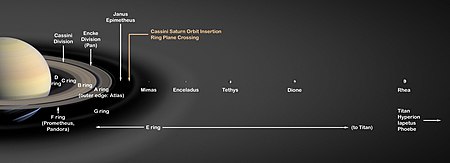A satellite system is a set of gravitationally bound objects in orbit around a planetary mass object (incl. sub-brown dwarfs and rogue planets) or minor planet, or its barycenter. Generally speaking, it is a set of natural satellites (moons), although such systems may also consist of bodies such as circumplanetary disks, ring systems, moonlets, minor-planet moons and artificial satellites any of which may themselves have satellite systems of their own (see Subsatellites). Some bodies also possess quasi-satellites that have orbits gravitationally influenced by their primary, but are generally not considered to be part of a satellite system. Satellite systems can have complex interactions including magnetic, tidal, atmospheric and orbital interactions such as orbital resonances and libration. Individually major satellite objects are designated in Roman numerals. Satellite systems are referred to either by the possessive adjectives of their primary (e.g. "Jovian system"), or less commonly by the name of their primary (e.g. "Jupiter system"). Where only one satellite is known, or it is a binary with a common centre of gravity, it may be referred to using the hyphenated names of the primary and major satellite (e.g. the "Earth-Moon system").
Many Solar System objects are known to possess satellite systems, though their origin is still unclear. Notable examples include the Jovian system, with 95 known moons[1] (including the large Galilean moons) and the largest overall, the Saturnian System, with 146 known moons (including Titan and the most visible rings in the Solar System alongside). Both satellite systems are large and diverse, in fact, all of the giant planets of the Solar System possess large satellite systems as well as planetary rings, and it is inferred that this is a general pattern. Several objects farther from the Sun also have satellite systems consisting of multiple moons, including the complex Plutonian system where multiple objects orbit a common center of mass, as well as many asteroids and plutinos. Apart from the Earth-Moon system and Mars' system of two tiny natural satellites, the other terrestrial planets are generally not considered satellite systems, although some have been orbited by artificial satellites originating from Earth.
Little is known of satellite systems beyond the Solar System, although it is inferred that natural satellites are common. Possible signs of exomoons have been detected around exoplanets such as Kepler-1625b. It is also theorised that rogue planets ejected from their planetary system could retain a system of satellites.[2]
- ^ Cite error: The named reference
shep-mainwas invoked but never defined (see the help page). - ^ The Survival Rate of Ejected Terrestrial Planets with Moons Archived 21 February 2023 at the Wayback Machine by J. H. Debes, S. Sigurdsson
